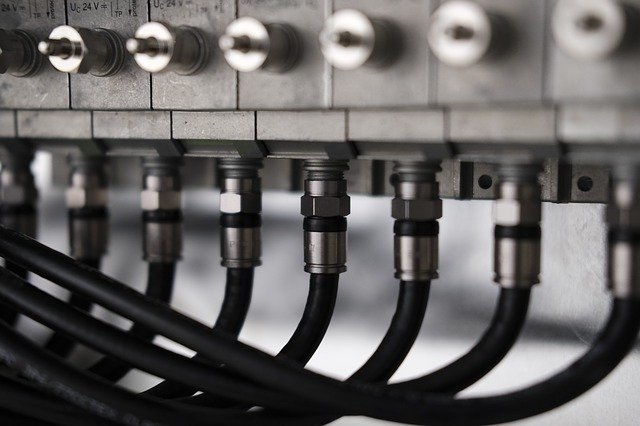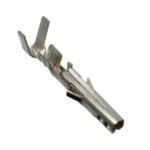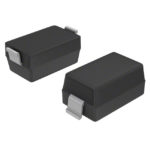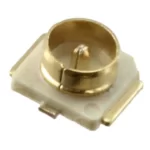How Does Coax Cable Work

Coax cable is the standard cable type in most RF environments. It has been the gold standard for radio frequency (RF) transmission and reception for decades. There are many advantages to using coax cable, including its ability to handle high frequencies and its immunity from electromagnetic interference. Coaxial cable is commonly used for audio signals and as a broadcast medium in television studios as well as for antennae connections and video signal connections between devices such as televisions, streaming boxes, DVRs, and game consoles. If you’re reading this article, it means you have an interest in how coaxial cables work. Well, here’s everything you need to know about coaxial cables and their role in modern technology.
What is Coax Cable?
Coaxial cables, more commonly known as coax cables, are used for a wide range of applications, including RF and TV signal transmission, connecting home theatre systems, connecting digital audio devices, computer networks, and even automotive audio systems. Coax cables are made up of two conductors separated by an insulating material called the dielectric. One conductor is a solid copper wire called the inner conductor and the other is a copper tube called the outer conductor. Between the inner and outer conductors is the dielectric, which is usually made of paper, polyethylene, or polyethylene terephthalate (PET). The article will discuss the most common form of coax cable: the insulated-coaxial cable, also known as coax.
Coax Cable Basics
The centre conductor of a coaxial cable is surrounded by insulation and then surrounded by an outer conductor. The outer conductor is usually either a braided copper shield or a foil shield. The centre conductor is usually a solid copper wire. The purpose of the two concentric conductors is to ensure that the electromagnetic fields stay within the shield, so that the person handling the cable does not get electrocuted.
Coax Cable Types
Coax cables can be divided into two main categories: Hardline and Softline. Coax Hardline – Hardline coax cables are designed for permanent installation. Unlike softline cables, hardline coaxial cables are not designed to be unplugged or moved around. Hardline cables are generally used for long distance home theatre or antenna connections. They are available with a wide variety of connectors, including BNC, RCA and F-Type connectors. Coax Softline – Softline coax cables are designed to be unplugged and moved around. They are typically used for short distance connections, such as connecting a home theatre receiver to a TV. Softline cables are generally made with a small plug, referred to as a mini plug or S plug. They are available in a wide variety of connectors, including BNC, RCA, and SMA connectors.
How Coaxial Cables work
The electromagnetic field inside the coax cable is contained by the shield. When electromagnetic fields leak out through the shield, they induce a current in the shield that flows in the opposite direction. Inside the coax cable, the electromagnetic field is created by the current flowing through the inner conductor. The electromagnetic field inside the coax cable also creates a voltage on the shield. This voltage is equal and opposite to the voltage created by the current flowing in the inner conductor. The voltage and current on the shield of the coax cable can be used to transfer data and provide power to devices that are connected to the cable.
Advantages of Coax Cables
There are many advantages to using coax cables. Here are just a few of them: – Coax cables can handle high frequencies – Coax cables can handle very high frequencies, which is necessary for sending and receiving high-definition signals. – Coax cables can handle large amounts of power – coax cables can handle large amounts of power, which is important for powering devices connected to the cable. – Coax cables are immune to EM interference – coax cables are immune to electromagnetic interference, which is very important when working in an RF environment. – Coax cables can be used for long distance connections – Coax cables can be used for long-distance connections, which is important for large buildings that use a central antenna to distribute TV and radio signals. – Coax cables are relatively inexpensive – Although coax cables are more expensive than some other options, they are still relatively inexpensive, especially when you consider their many advantages.
Disadvantages of Coax Cables
There are very few disadvantages to using coax cables, but they do exist. Here are a few to keep in mind: – Coax cables are more difficult to work with than some other cables – Coax cables are bulkier than some other types of cables, which can make them more difficult to work with. – Coax cables are larger in diameter than some other cables – Coax cables are larger in diameter than some other cables, which can make it more difficult to fit them through small spaces. – Co-ax cables are more expensive than some other cables – Coax cables are more expensive than some other cables, so they may not be an ideal choice for very short connections.
Conclusion
Coax cables are a great choice for many different applications. They can handle high frequencies, handle large amounts of power, are immune to electromagnetic interference, can be used for long distance connections, and are relatively inexpensive. However, they are more difficult to work with than some other cables, are larger in diameter than some other cables, and are more expensive than some other cables. If you’re in need of a cable to transfer high definition signals over long distances, you should consider using a coax cable.


